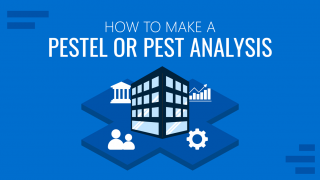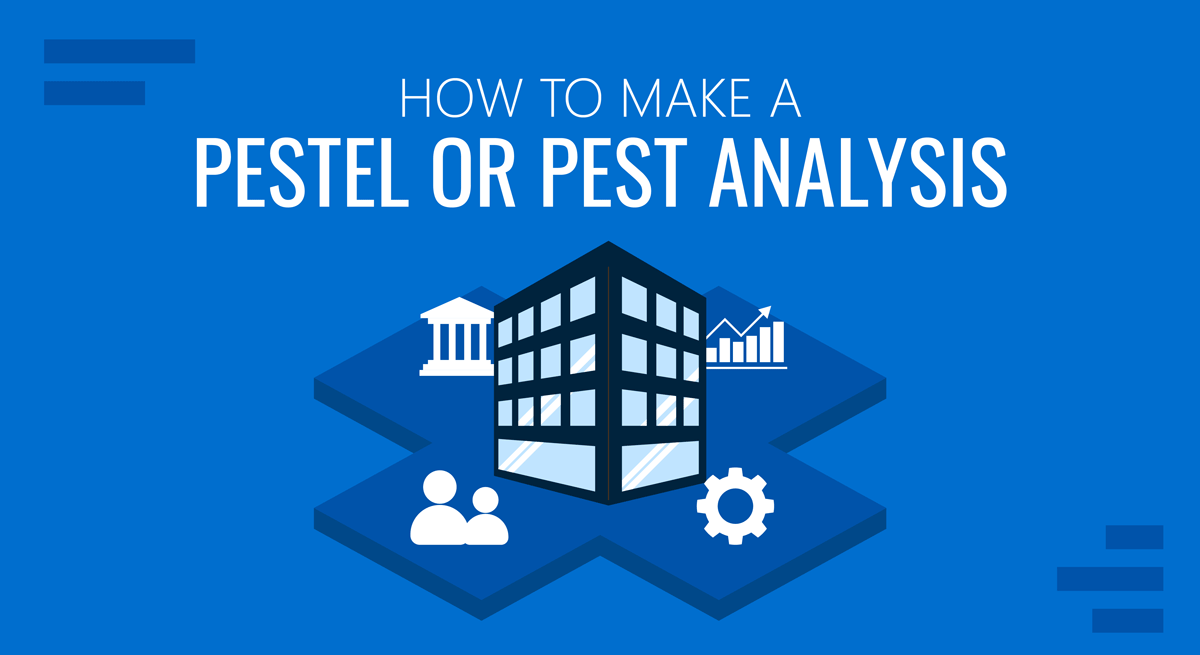
Performing a marketing analysis effectively is essential for evaluating the profitability of business ventures and determining how conducive the environment may be for a business venture. The Pest Analysis is an important model that can be used as a scale to measure such factors to determine the course of action for a business.
What is a PEST or PESTEL Analysis?
PESTEL analysis is an acronym for Political, Economic, Social, Technological, Environmental, and Legal. It is a strategic framework used by businesses and organizations to comprehend the macro-environmental factors they have to consider and navigate in their industry. It helps companies better understand the broader business landscape, inform strategic decision-making, and predict how future trends could impact their operations.
PEST analysis is a variant of PESTEL without the Environmental and Legal components. In a PEST Analysis, the following elements are present: Political, Economic, and Social factors and a Technological analysis to determine the market outlook to forge plans to steer the business in a specific direction.
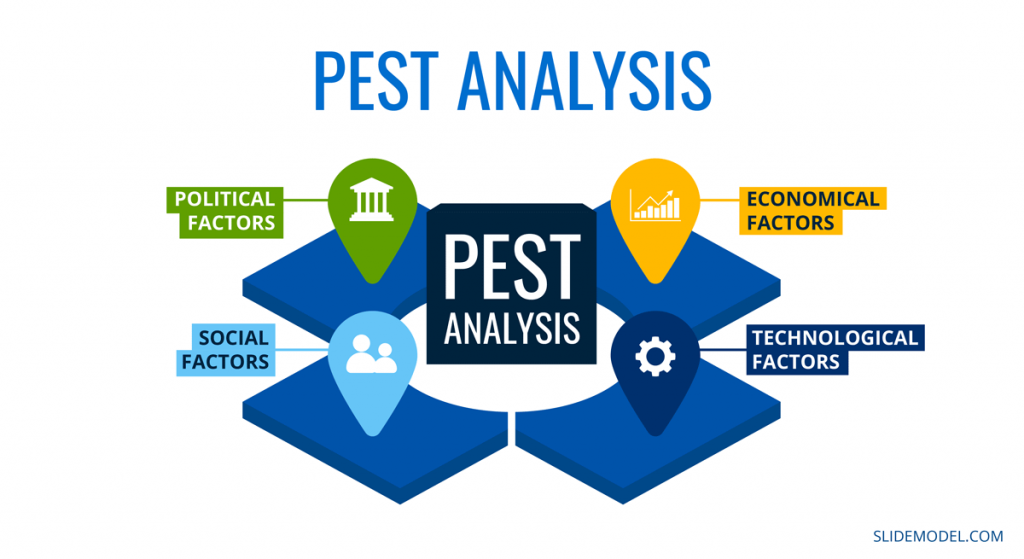
Recent additions to this model have also included factors like Ethics and Demographic elements (STEEPLE and STEEPLED); however, for this article, we will stick to PEST and PESTLE analysis.
Key Elements of a PEST and PESTEL Analysis
Let’s delve into the elements of PESTEL and how they influence business:
Political Element
Political element of the analysis include evaluating government control, taxation policy, trade barriers, labor laws, and the sphere of the government’s influence in affecting the markets. Knowing such details is essential to ensure that a business can freely function within a market without the government negatively impacting profits and revenue. For example, selling a product that is highly subsidized by the government will not be profitable as the subsidy will undercut the price, making the venture unprofitable for private businesses.
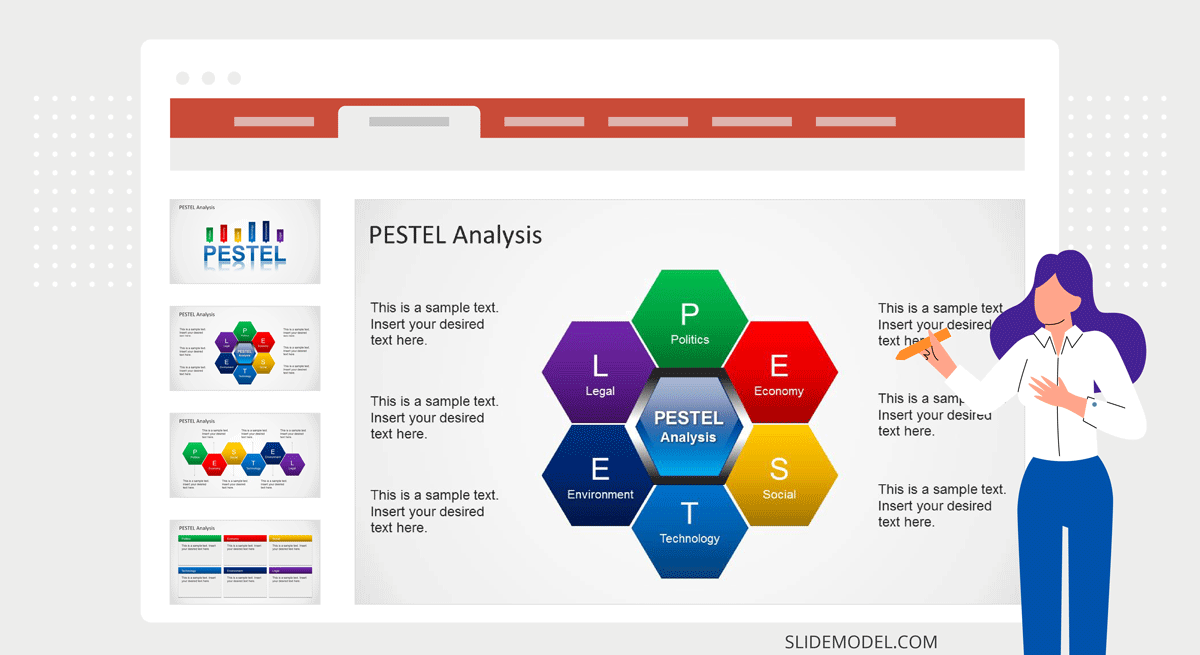
Economic Element
The last thing any business needs is an unstable economic environment, such as an uncertain exchange rate, high interest and inflation rate or other economic factors which may hinder progress and profitability for a business. This is why the PEST or PESTEL analysis includes analyzing the economic conditions of the market to determine the scope for grows and expansion of a business
Social Element
This is another important consideration for a business. Certain types of products are either legally barred from production in certain countries or may be socially unacceptable for consumption by the vast majority of the populace. Furthermore, businesses can always make good use of social norms and values by ensuring that their marketing strategy not only respects them but also appeals to the socially acceptable standards of people to effectively sell a product.
Technological Element
This may include the availability of technology in a country, the rate to which technology is being adapted or changed in a specific market, Research and Development initiatives and the scope of production costs which may be associated with technology.
Environmental Element
Apart of PESTEL, the environmental analysis includes analysis of ecological and environmental factors like the impact of climate on tourism, insurance, farming, etc.
Legal Element
This also falls under the PESTEL realm and entails the evaluation of health, consumer, antitrust, employment and other types of laws in the country.
How to conduct a PEST or PESTEL Analysis? (Step by Step)
The process of conducting a PEST or PESTEL Analysis involves the following steps.
Step 1 – Identify the Scope: The first step involves identifying the scope of the analysis. In this step, we define the purpose, context, and time frame of the analysis.
Step 2 – Gather Information: Next, we research and gather data related to all the elements of PEST or PESTEL. For PEST, it will involve four elements, while for PESTEL it will involve gathering information for six elements. The use of reliable sources is important, this may involve resources such as government reports, research studies, newspaper articles, trade journals, etc.
Step 3 – Analyze the Information: Then, examine the data and identify how each factor could impact your business or project. Look for trends, changes, or events in each category.
Step 4 – Draw Conclusions: After analyzing the information, we draw the conclusions. Assess the potential impact of each factor on your business. This could be in the form of opportunities and threats or by performing a SWOT Analysis instead. In the case of analyzing opportunities and threats only, we consider internal and external factors. Opportunities are external factors that the company could leverage for its benefit, while threats are elements that could harm the organization.
Step 5 – Formulate Strategies: Then, based on the insights gathered, develop strategies to capitalize on the opportunities and mitigate the risks identified.
Step 6 – Review and Update: The PESTEL analysis should be an ongoing process and reviewed regularly as external macro-environmental factors can change quickly.
Making a PEST or PEST Analysis Using PowerPoint Templates
If you are looking for a head start, you might find it worth using a readymade PowerPoint Template. Below are some recommended templates that can help you create a PEST or PESTEL analysis for presentations and official use.
PEST Analysis PowerPoint Template
Whether you are looking to create a single slide with a PEST Analysis diagram or wish to show each aspect of your analysis with specific detail, this template can help you create a range of slides with both a summary of your analysis, as well as standalone slides to touch upon political, economic, social and technological aspects of your analysis.
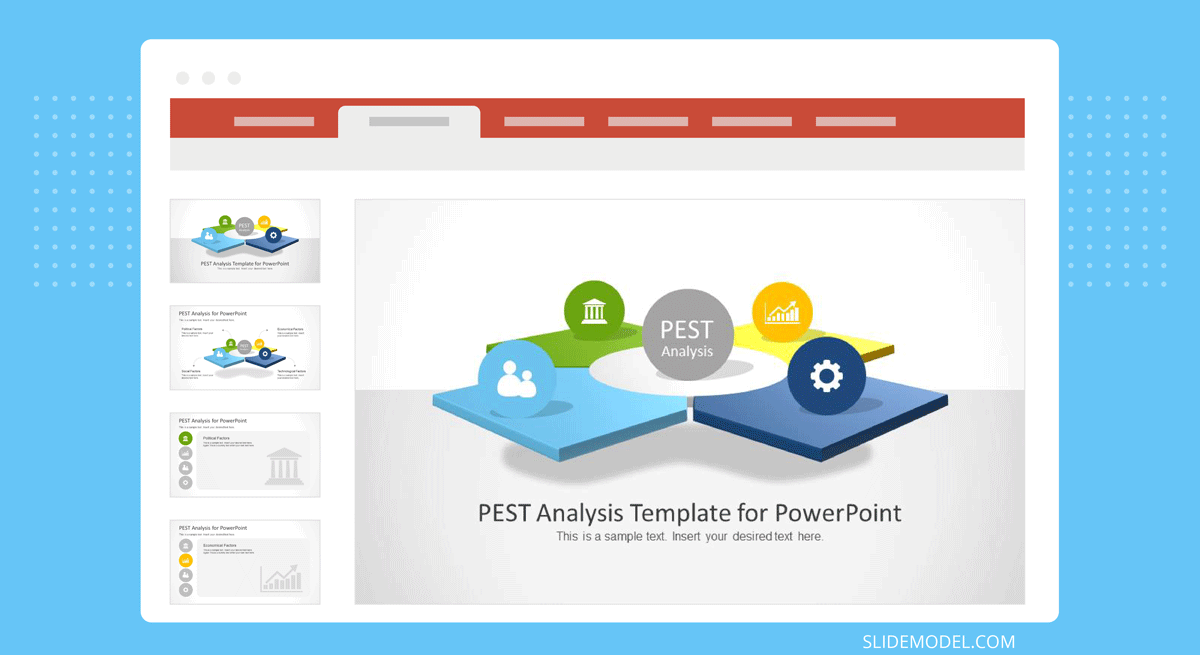
Go to Download PEST Analysis PowerPoint Template
PEST Analysis Diagram Template for PowerPoint
As the name suggests, this is a template for creating a diagram of your PEST Analysis. The template offers three sample slides with different diagram designs to help you create a PEST analysis for your audience at a presentation.
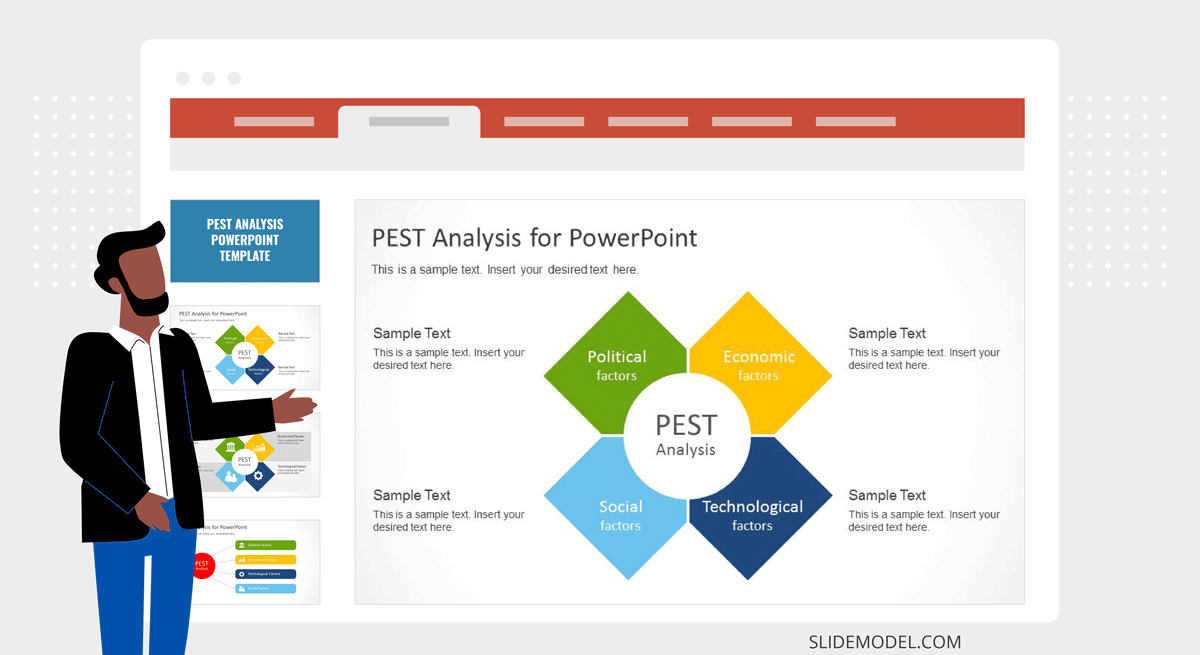
Go to Download PEST Analysis Diagram Template for PowerPoint
PESTEL Analysis PowerPoint Template
If you would like to extend your analysis to add environmental and legal aspects, then you can use the PESTEL Analysis template. This template offers as many as 11 different sample slides with a range of layouts to help you create a PESTEL analysis.
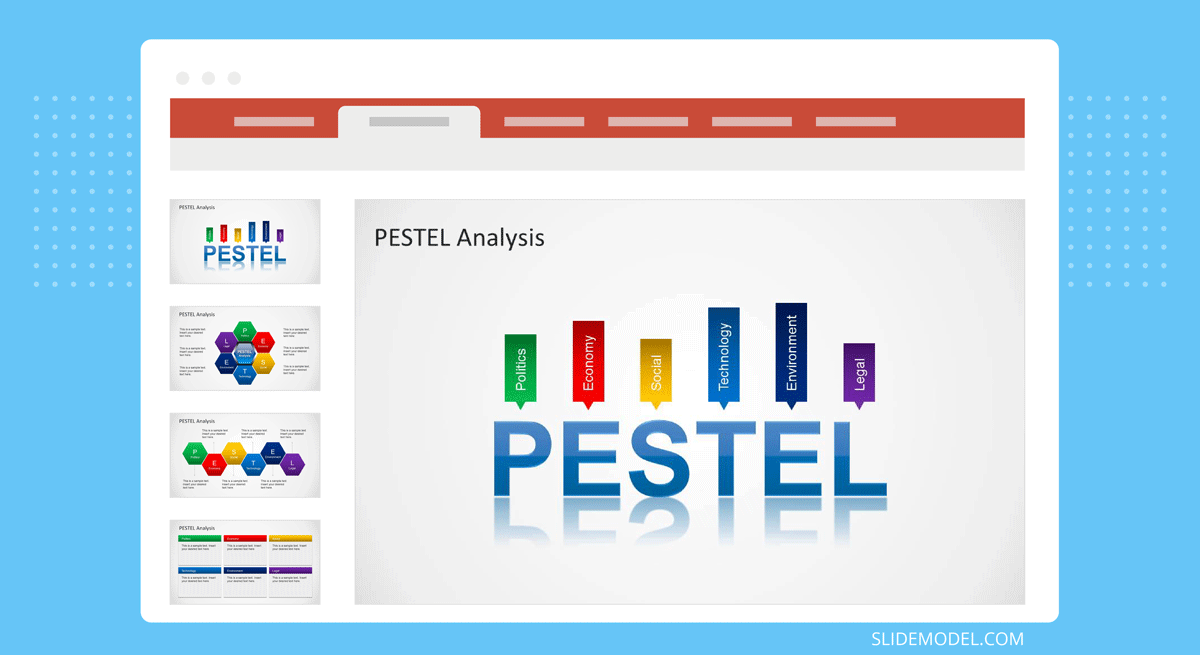
Go to Download PESTEL Analysis PowerPoint Template
PEST or PESTEL analysis is often accompanied by other types of analysis. This is why you may find our business analysis tips and analysis templates of help, especially our posts about SWOT Analysis and Boston Matrix.
